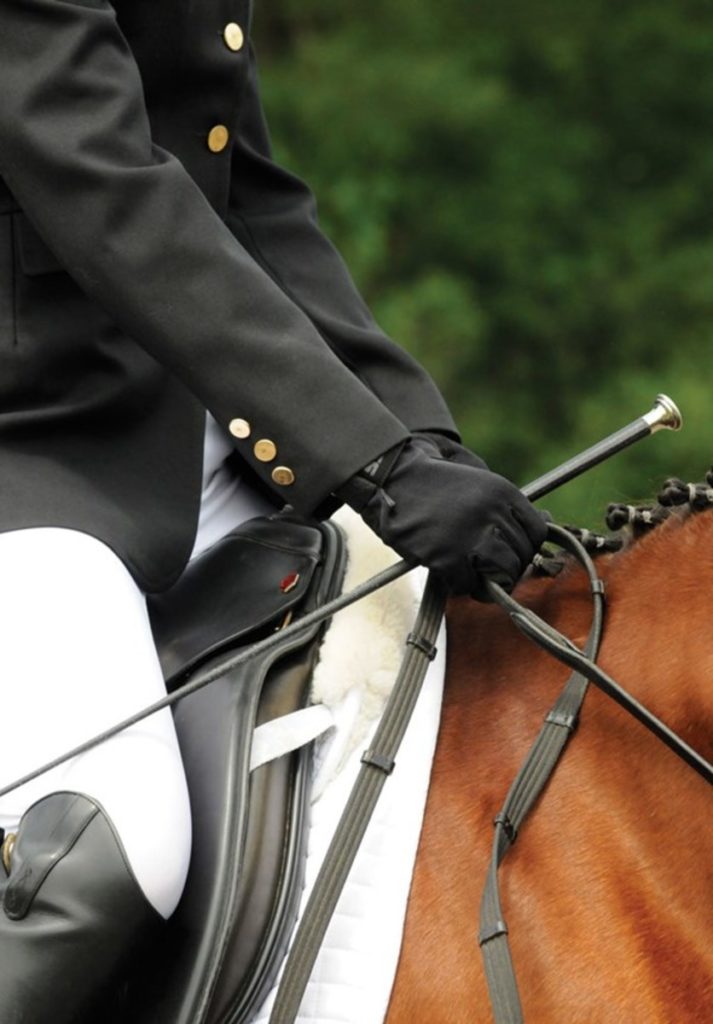How do you work on your horse’s responsiveness to the aids ?
The first exercise is the responsiveness to the leg aids. Your horse needs to move off the leg at a simple light pressure of the calf, without kicking. The calf pressure is very light. The horse must feel it very gently. You can do it in the halt and ask him to move forward. If he doesn’t respond, gently touch him with the spur and then stroke him once he has moved forward. If the reaction is too slow, you can use your whip (always gently). The important thing is to make him understand what you are asking. Always remember to reward him with a stroke. You never get anything from fear or force.
To confirm your horse is in front of the leg, you have to try doing transitions. These are the premises for teaching your horse your ‘codes’ of communication. And that’s what’s going to allow you to get transitions within a gait (collect, extend…) or between gaits (from canter to trot, from trot to canter…). If the horse is responsive to the leg aids, it makes transitions easier. First, try to transition from trot to canter, until it goes smoothly.
To go from canter to trot, before you ask your horse to balance himself by using your hands, do it with your upper body first. Sit up tall in the saddle and stop following the motion with your seat. This causes a slight hand action that lifts your horse’s neck.
In all gaits, the seat moves by following to the horse’s moves. For a downward transition, tighten up your core and stiffen in your seat. It will restrict the horse’s motion. You have to stiffen the seat and sit tall at the same time. Your body weight will help the horse slow down.
These exercises should be done every day at the beginning of the session to stop the horse from getting into bad habits. Once he is responsive, you can do these types of exercises less often. But it’s often necessary to remind them to be in front of the leg.
If your horse doesn’t respond to the aids, remember to halt and rein back a few steps. This will have the benefit of rebalancing him and encourage him to pay attention to your aids.
One very useful trick: You might think you should always stimulate « lazy » horses (less forward horses) with the legs. On the contrary, the legs should be used sparingly on them! It must surprise them. It must not be a constant pressure, so they’ll be more responsive.
For horses that are already very reactive to the leg, it is necessary to have the legs in permanent contact, so as to keep them channelled and get them accustomed to the contact.
Do you regularly work on getting your horse more responsive to the leg ? What did you think of this email ? Leave me a comment here. See you soon !
